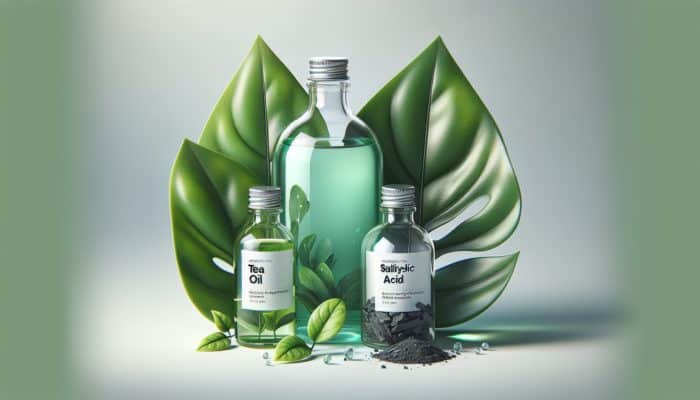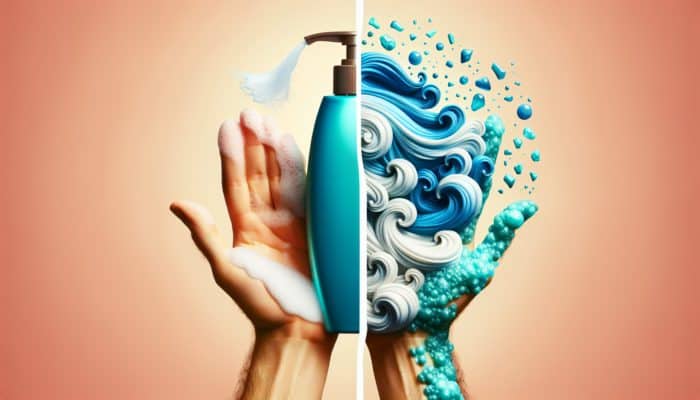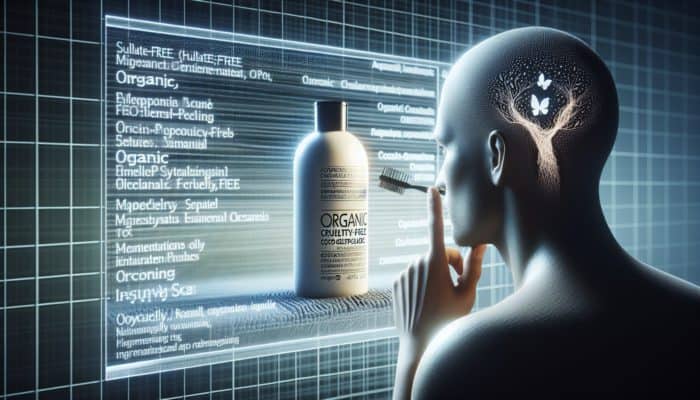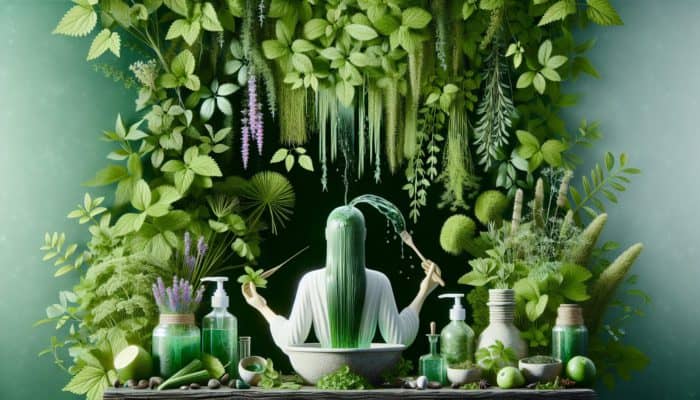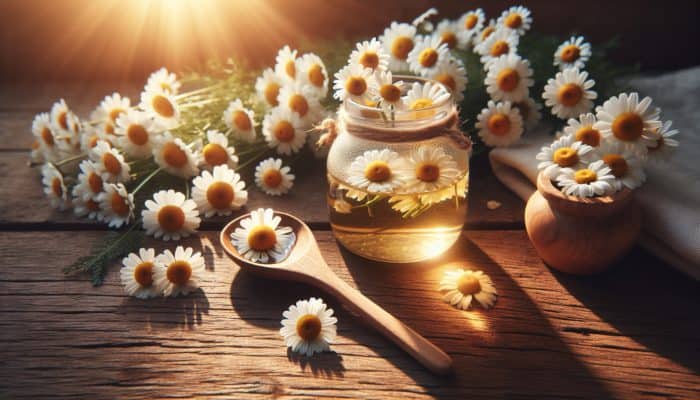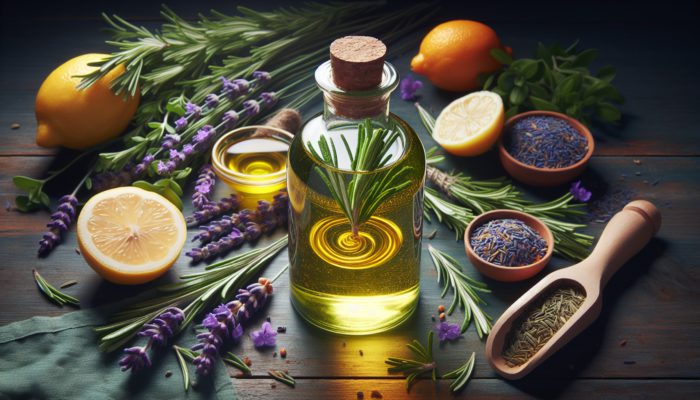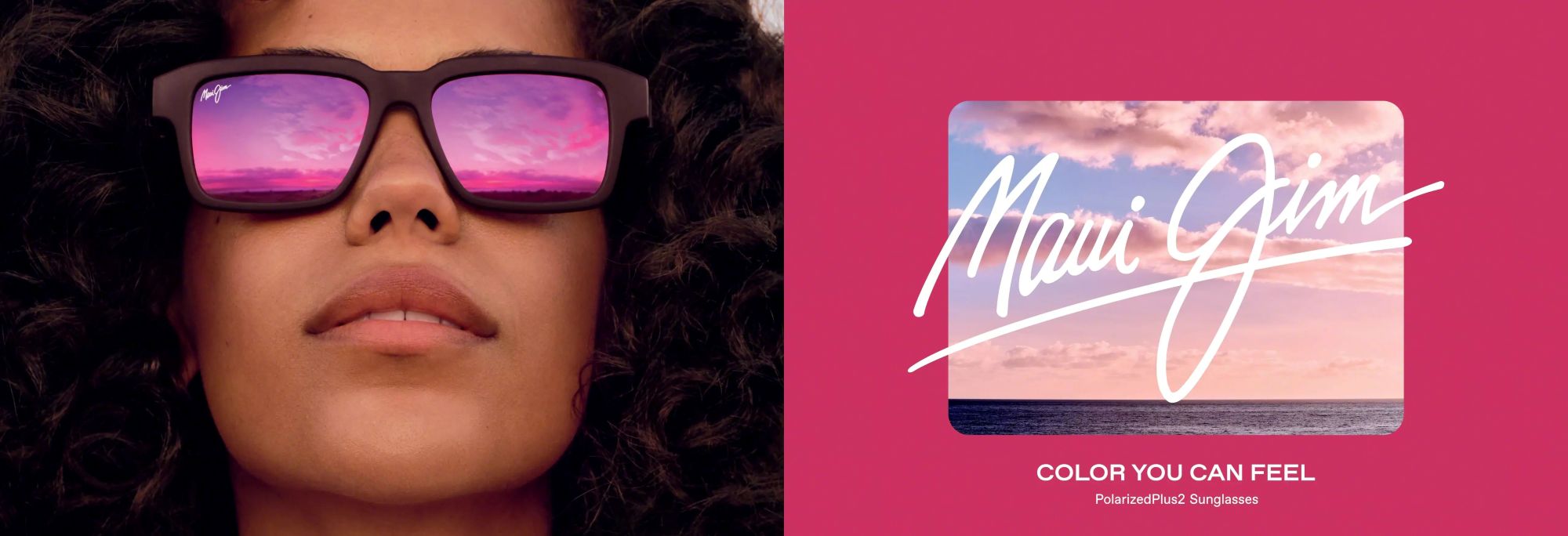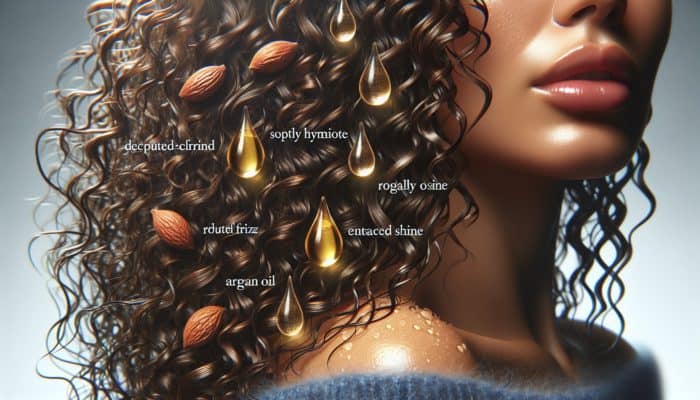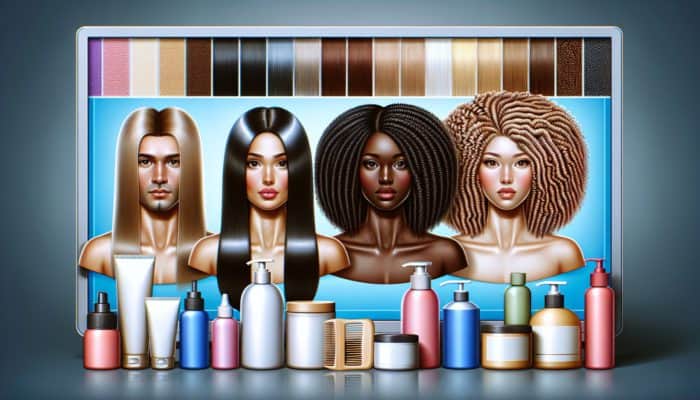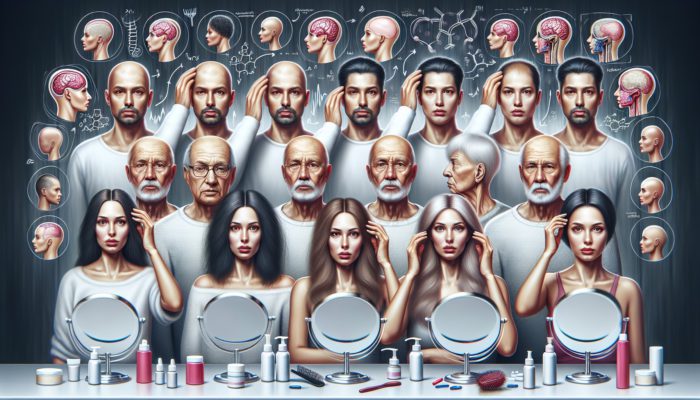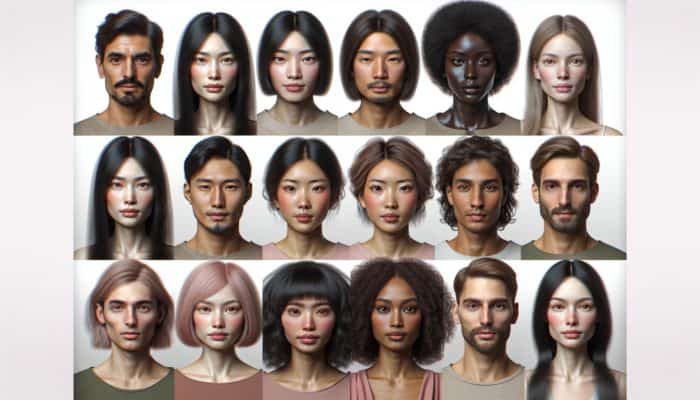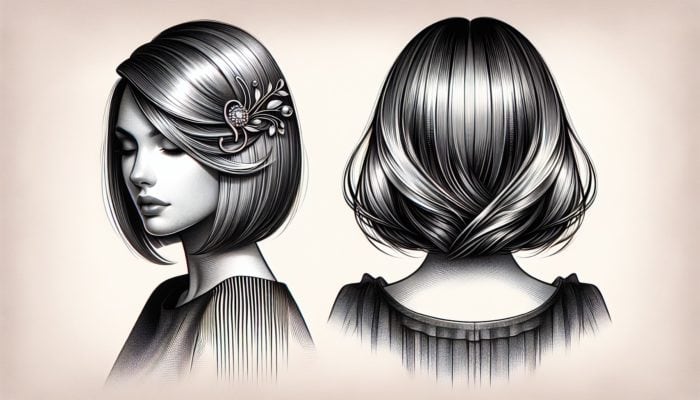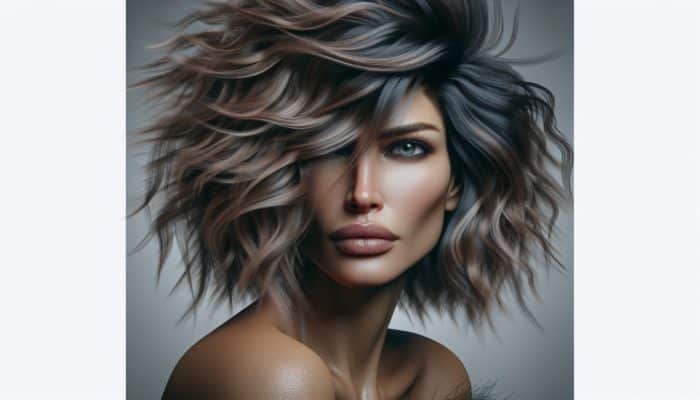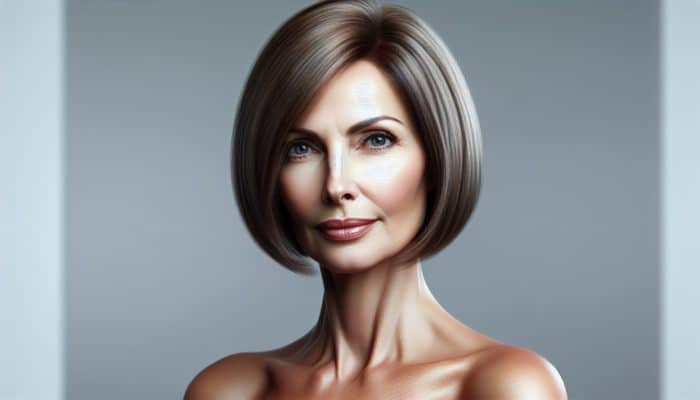Comprehensive Guide to Identifying Your Hair Type and Meeting Its Needs
Maximize the Beauty and Shine of Your Straight Hair
Straight hair is characterized by its silky smooth texture and absence of curls or waves. This hair type has an exceptional ability to reflect light, which contributes to its shiny and healthy appearance. However, straight hair can become prone to oiliness when the scalp produces excessive sebum. For those with straight hair, creating a personalized hair care routine is essential for maintaining its health, luster, and overall vitality. Implementing a structured regimen can help you enjoy your hair’s natural beauty while addressing its unique challenges.
To maintain the vitality of straight hair, choosing shampoos and conditioners specifically formulated for this hair type is essential. Lightweight products are ideal, as heavier formulations can weigh your hair down, resulting in a flat and dull appearance. Ingredients like aloe vera and coconut oil are fantastic for balancing moisture levels without adding unnecessary weight. Additionally, incorporating a clarifying shampoo into your routine once a month can effectively eliminate product buildup and excess oil, ensuring that your hair stays fresh, vibrant, and full of life.
When it comes to treatments, straight hair thrives on consistent conditioning. A deep conditioning treatment on a weekly basis can work wonders in restoring moisture, particularly if your hair appears dry or brittle. For an extra boost of shine, consider applying serums or oils sparingly to the ends of your hair after styling. Products enriched with argan oil or jojoba oil can significantly enhance your hair’s natural shine while keeping it hydrated and healthy.
Styling straight hair opens up a plethora of exciting options. From sleek, polished ponytails to voluminous blowouts, the potential for experimentation is thrilling. Nonetheless, caution is essential when using heat styling tools; always apply a heat protectant spray beforehand to shield your hair from potential damage. For those who prefer a more natural appearance, air-drying is a superb alternative, particularly when utilizing lightweight mousses that enhance texture without inducing frizz.
Master the Art of Wavy Hair Care with Expert Tips
Wavy hair is cherished for its stunning blend of texture and volume, offering versatility for a myriad of styles. Defined by gentle waves that can range from loose to well-defined curls, this hair type may encounter challenges such as frizz and inconsistent texture. A deeper understanding of the unique characteristics of wavy hair can significantly improve its management and styling.
To maintain healthy wavy hair, prioritizing hydration and definition is key. Utilize a moisturizing shampoo and conditioner specially formulated for wavy or curly hair. Seek products enriched with ingredients like shea butter or glycerin, which effectively lock in moisture and enhance wave definition. Avoid sulfates, as these can strip the hair of its natural oils, leading to unwanted dryness and frizz.
When styling your wavy locks, embrace your hair’s natural wave pattern. A popular method involves applying a curl-enhancing cream or mousse to damp hair, allowing the waves to form organically as the hair dries. For those desiring more structured waves, the “plopping” technique is highly effective; wrapping your hair in a cotton t-shirt encourages curl formation while minimizing frizz.
Regular deep conditioning treatments are invaluable for wavy hair, especially in humid conditions where frizz can be an ongoing battle. Dedicating time to a weekly treatment can enhance texture and improve overall hair health. Additionally, utilizing a silk or satin pillowcase can reduce friction during sleep, helping to maintain your beautiful waves while minimizing breakage and preserving their integrity.
Nurturing Your Gorgeous Curly Hair: An Embrace of Care
Curly hair is renowned for its remarkable volume and bounce, yet it also presents distinctive challenges. The natural curl pattern often leads to drier hair compared to straight or wavy types, primarily due to the difficulty of sebaceous oil traveling down the hair shaft. Understanding the specific characteristics of curly hair is crucial for effective care, particularly regarding hydration.
Hydration is vital for the health of curly hair. Opt for a rich, moisturizing shampoo that steers clear of harsh sulfates and emphasizes nourishing ingredients. Following up with a deep conditioner that contains emollients like avocado or olive oil can penetrate the hair shaft, delivering essential moisture. Additionally, consider integrating curl-specific leave-in conditioners to provide extra hydration while helping define your beautiful curls.
To enhance those luscious curls, employing effective styling techniques is essential. Strategies like the “curly girl method” advocate for minimal heat usage while emphasizing products that hydrate and define curls. Applying styling gels or creams to damp hair can help maintain curl shape while controlling frizz. Gently scrunching the hair during product application encourages natural curl formation, yielding stunning results.
Regular trims are crucial for maintaining the integrity of curly hair by eliminating split ends and promoting healthy growth. Incorporating occasional protein treatments can also boost the hair’s strength, particularly if your curls appear limp or lifeless. Striking the right balance between moisture and protein is essential to keep your curls vibrant and full of life, ensuring they bounce beautifully with every movement.
Targeting Common Hair Issues for Optimal Health
Proven Techniques to Combat Dryness and Breakage
Dryness and breakage are common issues faced by individuals across all hair types, often resulting in frustration and dissatisfaction. Understanding the underlying causes of these challenges is the first step toward effective treatments that can restore moisture and strength to your hair.
Various factors contribute to dryness and breakage, including environmental stressors, excessive heat styling, and improper hair care practices. For example, exposure to harsh weather conditions—such as cold air or intense sunlight—can strip moisture from hair, leading to dry and brittle strands. Additionally, frequent use of heat tools without adequate protection can weaken the hair structure, exacerbating breakage and damage.
To combat dryness, establishing a nourishing hair care routine tailored to your specific needs is essential. Begin with a gentle, hydrating shampoo that cleanses without stripping away essential oils. Follow this up with a rich conditioner designed to restore moisture. Incorporate regular deep conditioning treatments into your regimen; look for masks enriched with ingredients like honey, shea butter, or keratin to effectively revitalize your hair.
Incorporating an oil treatment into your routine can also yield significant benefits. Oils such as argan or coconut oil can be applied to damp hair before styling to seal in moisture and form a protective barrier against damage. Furthermore, consider reducing the frequency of heat styling and embracing air-drying techniques, allowing your hair to recover naturally and maintain its health.
To further prevent breakage, regular trims are paramount. Even a small trim can eliminate split ends and promote healthier growth. Additionally, be attentive to how you handle your hair—gentle brushing or combing with a wide-tooth comb can minimize breakage, particularly on wet hair, which is more vulnerable to damage and requires extra care.
In-Depth Exploration of Dandruff and Scalp Conditions
Dandruff and various scalp conditions can be sources of discomfort and embarrassment for many individuals. Understanding the underlying causes and effective solutions is vital for alleviating these issues and fostering a healthier scalp environment.
Dandruff is commonly caused by a combination of dry skin, product buildup, or the overgrowth of a yeast-like fungus known as Malassezia. Symptoms typically include itching, flaking, and irritation. A thorough diagnosis can help determine the most suitable treatment, as some cases may require medicated shampoos to effectively control fungal growth.
For those dealing with a dry scalp, incorporating a moisturizing shampoo and conditioner is critical. Seek products containing natural oils and botanical extracts that nourish and hydrate the scalp. Regular exfoliation of the scalp can also be beneficial; gentle scrubs formulated for the scalp can help remove buildup and promote healthy circulation.
In addition to topical treatments, lifestyle factors significantly impact scalp health. Techniques for managing stress, such as mindfulness practices and relaxation exercises, can greatly improve scalp conditions, as stress tends to exacerbate symptoms. Maintaining a balanced diet rich in vitamins and minerals also supports overall scalp health; foods high in omega-3 fatty acids, zinc, and antioxidants can be particularly beneficial for a healthy scalp.
For persistent dandruff or scalp issues, seeking professional advice is highly recommended. A dermatologist can provide tailored recommendations, including prescription treatments or lifestyle changes that may alleviate the condition. Regular follow-through with recommended treatments is critical for long-term relief, ensuring a healthy and nourished scalp.
Effective Approaches to Addressing Hair Loss
Experiencing hair loss can be a distressing situation, affecting individuals of all ages and backgrounds. Understanding the various types of hair loss and their potential causes is essential for discovering effective treatments that promote regrowth and restore confidence.
There are numerous forms of hair loss, ranging from androgenetic alopecia, commonly referred to as male or female pattern baldness, to telogen effluvium, often triggered by stress or hormonal shifts. Identifying the specific type of hair loss is critical, as different conditions necessitate tailored approaches to treatment.
Possible causes of hair loss include hormonal imbalances, nutritional deficiencies, stress, and underlying medical conditions. For instance, a deficiency in essential nutrients such as iron, biotin, and protein can lead to thinning hair. Maintaining a well-balanced diet rich in these nutrients can promote healthy hair growth and prevent further loss.
Numerous treatments can assist in encouraging hair regrowth. Over-the-counter options like minoxidil are widely used and have shown effectiveness for many individuals. Prescription medications may also be an option, particularly in cases caused by hormonal imbalances. Furthermore, lifestyle changes, such as reducing stress through exercise, meditation, and maintaining a consistent sleep schedule, can significantly support hair health.
For those interested in alternative solutions, natural remedies such as essential oils—like rosemary and peppermint oil—have gained popularity for their potential to stimulate hair growth. Massaging these oils into the scalp can enhance circulation and create a favorable environment for hair growth.
If hair loss persists despite at-home treatments and lifestyle adjustments, consulting a healthcare professional is advisable. They can help identify any underlying health issues and recommend more advanced treatments, such as platelet-rich plasma therapy or hair transplantation, tailored to individual needs.
Building a Holistic Hair Care Routine
Crucial Daily Hair Care Practices for Stunning Locks
Establishing a daily hair care routine is crucial for maintaining the health and appearance of your hair, no matter your hair type. By concentrating on fundamental steps, you can ensure your hair remains vibrant, strong, and manageable throughout the day.
The first essential step in your daily routine is properly washing your hair. The frequency of washing may vary based on hair type; for instance, individuals with straight hair may find that washing every other day works best, while those with curly hair might only wash once or twice a week to avoid stripping natural oils. Choose shampoos that cater to your specific hair needs—hydrating formulas for dry hair and volumizing options for fine hair, for example, to guarantee optimal cleanliness and care.
Conditioning is another crucial step that should never be overlooked. A quality conditioner helps detangle the hair, making it easier to manage while providing essential moisture. Apply conditioner from mid-length to the ends, taking care to avoid the roots unless your hair is particularly dry. Allow it to sit for a few minutes before rinsing thoroughly to maximize its benefits and ensure your hair feels soft and nourished.
In addition to washing and conditioning, don’t forget to protect your hair from environmental damage and styling tools. When heading outdoors, consider using a leave-in conditioner or a UV protectant spray, especially if you’re in sunny or windy conditions. Furthermore, if you regularly use heat styling tools, always apply a heat protectant spray to shield your hair from potential damage.
Finally, remember to pay attention to your hair’s overall health by incorporating regular trims into your routine. A trim every six to eight weeks can help remove split ends and maintain your hair’s polished appearance. Balancing daily care with the right products and routines will empower you to keep your hair healthy, vibrant, and beautiful.
Enhancing Hair Vitality with Weekly Treatments
Integrating weekly treatments into your hair care regimen can significantly elevate the health and appearance of your hair. These treatments are specifically formulated to provide deeper nourishment and repair, addressing specific concerns that may arise from everyday styling and environmental factors.
Deep conditioning treatments rank among the most effective weekly treatments available. These products typically contain concentrated ingredients that penetrate the hair shaft and provide essential moisture, making them ideal for all hair types. For individuals with dry or damaged hair, consider using a heavy cream or mask infused with nourishing oils, such as coconut or argan oil, to replenish moisture and restore shine.
Another beneficial weekly treatment involves the use of hair oils. Applying a hair oil treatment before washing can help strengthen the hair and prevent breakage. Warm a small amount of oil in your hands and apply it throughout the lengths of your hair, focusing on the ends. Allow it to sit for at least 30 minutes, or overnight for a more intensive treatment, before washing it out to reap the maximum benefits.
Exfoliating the scalp is also an important consideration for a weekly routine. Using a gentle scrub designed for the scalp can help eliminate product buildup and dead skin cells, promoting a healthier environment for hair growth. This treatment can also enhance circulation, further supporting hair health and vitality.
Finally, consider using a clarifying shampoo once a week, particularly if you frequently use styling products. This type of shampoo is designed to thoroughly cleanse the hair, removing any residue that may weigh it down. However, it should be used in moderation, as overuse can lead to dryness and imbalance.
Establishing a comprehensive weekly treatment routine can truly transform the health of your hair, helping to maintain its vibrancy and strength while addressing specific concerns as they arise.
Adapting Your Hair Care Routine to Seasonal Changes
Hair care routines should be adjusted to accommodate seasonal changes, as varying weather conditions can significantly impact the health of your hair. Understanding how to modify your routine according to the seasons can aid in maintaining your hair’s beauty and vitality throughout the year.
During the winter months, cold air and indoor heating can lead to dryness and static in the hair. To combat this, focus on increasing moisture levels within your hair care routine. Incorporate a heavier conditioner or a deep conditioning mask at least once a week to ensure your hair receives the necessary hydration. Additionally, using a humidifier in your home can add moisture to the air, benefiting both your hair and scalp.
In contrast, summer introduces its own challenges, particularly in the form of UV rays and increased humidity. To protect your hair from sun damage, always apply a UV protectant spray before heading outside. Additionally, consider wearing a hat or scarf to shield your hair from direct sunlight, thus preventing potential damage from harsh rays.
Humidity can lead to frizz, especially for individuals with wavy or curly hair. Utilizing anti-frizz serums or creams can help tame unruly hair, providing a smoother finish. Regular trims during this season can also prevent split ends from worsening due to humidity and heat exposure.
Adapting your hair care routine to the seasons not only helps maintain hair health but also enhances your overall appearance. By proactively modifying your approach according to the climate, you can ensure your hair remains strong, healthy, and beautiful all year round.
Choosing the Right Hair Care Products for Your Unique Needs
Identifying the Best Shampoos and Conditioners for Your Hair Type
Selecting the appropriate shampoos and conditioners is fundamental to achieving and maintaining healthy hair. With a multitude of products available on the market, understanding your hair type and specific needs will guide you in making informed choices that enhance your hair’s health and appearance.
Start by identifying your hair type—whether it’s straight, wavy, curly, or coily—as this is crucial for selecting suitable products. For instance, straight hair often thrives on lightweight formulations that won’t weigh it down, while curly hair typically requires thicker, more hydrating products to maintain moisture and effectively define curl patterns.
When selecting shampoos, look for options free from harsh sulfates, as these can strip the hair of its natural oils. Instead, opt for gently cleansing alternatives that contain natural ingredients, such as aloe vera or chamomile, which nourish the hair without causing dryness. For specific concerns like dandruff or scalp sensitivity, consider medicated shampoos containing active ingredients like ketoconazole or tea tree oil to effectively address your needs.
Conditioners play an equally important role in maintaining hair health. A good conditioner should complement your shampoo, providing additional moisture and detangling properties. For those with dry or damaged hair, nourishing conditioners enriched with proteins, vitamins, and essential oils can be particularly beneficial. Look for products containing hydrolyzed keratin or silk proteins to strengthen and protect the hair from environmental damage.
Additionally, pay attention to the pH of your hair products. Ideally, your shampoo should have a pH between 4.5 and 5.5, which closely aligns with the natural pH of hair. Conditioners should also maintain a similar pH to help seal the hair cuticle and lock in moisture, ensuring optimal results.
Ultimately, the right shampoo and conditioner can make a world of difference in the health and appearance of your hair. Regularly assessing your hair’s condition and adjusting your product selection accordingly will ensure that your hair care routine remains effective and tailored to your evolving needs.
Finding the Perfect Styling Products for Your Hair Type
Choosing the right styling products is essential for achieving your desired look while maintaining the health of your hair. Given the vast array of options available, understanding which products suit your hair type and styling needs can help you create beautiful styles without compromising hair health.
For straight hair, volumizing mousses or lightweight styling gels can enhance body and movement without weighing the hair down. These products provide a light hold, making them perfect for creating natural-looking volume. When applying these products, focus on distributing them at the roots and working through the lengths to avoid any heaviness.
Wavy hair often requires products that define and enhance the natural wave pattern. Curl creams and sea salt sprays are excellent choices, as they provide texture and help maintain the shape of the waves while minimizing frizz. When using these products, apply them to damp hair and scrunch gently to encourage wave formation and definition.
For curly hair, moisture is key. Seek out styling products specifically formulated for curly hair, such as curl-defining gels or creams that provide hold without stiffness. These products should ideally contain hydrating ingredients like aloe vera or coconut oil, nourishing the curls while enhancing their definition. When applying, ensure even distribution by working through sections of hair for optimal results.
Regardless of hair type, always consider the finish you desire. For a sleek, polished look, smoothing serums can help reduce frizz and add a lustrous shine. Conversely, texturizing sprays can add dimension and create a relaxed, bohemian vibe, suitable for casual styles.
When selecting styling products, avoid those containing alcohol, which can lead to dryness and damage. Instead, prioritize products infused with nourishing ingredients that benefit your hair type. With the right products in your arsenal, styling can become a creative and enjoyable process while keeping your hair healthy and vibrant.
Utilizing Natural Remedies for Effective Hair Care
The benefits of utilizing natural ingredients for hair care are gaining popularity as more individuals seek gentle, effective methods to maintain hair health. Often free from harsh chemicals, natural remedies offer a holistic approach to hair care that can yield impressive results.
One of the most revered natural remedies is coconut oil, known for its exceptional moisturizing properties. This oil can penetrate the hair shaft, reducing protein loss and preventing breakage. Consider applying coconut oil as a pre-shampoo treatment, allowing it to soak in for at least 30 minutes before washing it out. This practice can leave your hair feeling nourished, hydrated, and rejuvenated.
Another effective natural remedy is the use of aloe vera. Renowned for its soothing properties, aloe vera can calm the scalp while providing essential moisture. Use aloe vera gel as a hair mask, applying it directly to the scalp and lengths of the hair. Allow it to sit for approximately 30 minutes before rinsing to enjoy its numerous benefits, including hydration and improved scalp health.
For those dealing with dandruff or an itchy scalp, tea tree oil is an excellent choice. This essential oil boasts natural antifungal properties, making it effective against dandruff. Dilute a few drops of tea tree oil in a carrier oil, such as olive oil, and massage it into the scalp. Allow it to sit for around 30 minutes before washing it out for relief from scalp irritation and discomfort.
Honey is another powerful natural ingredient known for its moisturizing and antibacterial properties. Mixing honey with your regular conditioner can enhance hydration, particularly for dry or damaged hair. It can also contribute to improved shine and manageability, making it a versatile addition to your hair care routine.
Creating your own hair masks at home can be an enjoyable and rewarding experience. Ingredients like mashed avocado, olive oil, and yogurt can be combined to form a nourishing treatment tailored to your specific hair needs. The beauty of natural remedies lies in their versatility, allowing you to experiment and discover what works best for your unique hair type.
Exploring Effective Hair Treatments for Healthier Locks
Investigating different types of hair treatments can significantly enhance your hair’s health and address various concerns. From deep conditioning to protein treatments, understanding the available options enables you to tailor your hair care routine effectively and achieve your desired results.
Deep conditioning treatments are crucial for restoring moisture and repairing damaged hair. These treatments typically feature concentrated ingredients designed to penetrate the hair shaft, providing intense hydration. Look for masks containing natural oils, butters, and proteins for optimal results. Using a deep conditioner once a week can dramatically improve the overall health and appearance of your hair, making it feel soft and revitalized.
Protein treatments are particularly beneficial for individuals with weak or brittle hair. Since hair is primarily composed of keratin, infusing it with protein helps strengthen and protect against breakage. These treatments can vary in intensity; while some are meant for regular use, others are more intensive and should be used sparingly. Individuals with curly or damaged hair often find protein treatments helpful in maintaining elasticity and bounce, ensuring vibrant curls.
Another popular treatment option is the use of hot oil treatments. These treatments involve applying warm oils, such as olive or jojoba oil, to the hair and scalp. The heat facilitates deeper penetration of the oils, providing moisture and nourishment. This treatment is ideal for dry or damaged hair, as it can help restore shine and softness while revitalizing the hair.
Consider incorporating scalp treatments into your routine as well. These treatments focus on maintaining a healthy scalp environment, which is essential for hair growth. Ingredients like peppermint oil can stimulate circulation and promote a healthy scalp, encouraging new hair growth while preventing further loss.
Regularly assessing your hair’s condition and incorporating the right treatments can lead to transformative results. Whether your primary concerns are dryness, damage, or lack of volume, understanding the spectrum of available hair treatments will empower you to achieve your desired hair goals with confidence.
Understanding Professional Hair Treatments
Exploring Chemical Treatments for Stunning Hair Transformations
Understanding various chemical treatments and their effects on hair is crucial for anyone considering professional styling options. Chemical treatments can enhance your hair’s appearance and texture, but they also require careful consideration to ensure the health of your hair is not compromised in the process.
Perming is one of the most well-known chemical treatments, creating long-lasting curls or waves. This process involves applying a chemical solution to break the hair’s natural structure, allowing it to be reshaped. While perming can yield beautiful results, it’s essential to choose a reputable salon and engage in a thorough discussion with your stylist regarding your hair’s health before proceeding. Proper aftercare, including hydrating treatments, is vital to maintain the integrity of the hair post-perm and ensure it remains healthy and vibrant.
Relaxers are another common chemical treatment designed to straighten curly or wavy hair. This process involves applying a strong chemical solution that alters the hair’s structure, making it smoother and easier to manage. Although effective, relaxers can lead to significant damage if not applied correctly or if adequate care is not taken afterward. Regular conditioning and moisture treatments are necessary to prevent breakage and dryness following a relaxer treatment.
Colouring your hair chemically can also substantially change your hair’s appearance. However, the process can be damaging if not managed properly. It’s vital to select high-quality hair dye and opt for professional application to minimize damage. Moreover, considering demi-permanent or semi-permanent options can be less damaging than permanent dyes, providing a temporary change without the use of harsh chemicals.
If you’re contemplating any of these treatments, consulting a professional stylist is essential. They can evaluate your hair type, assess its health, and recommend the best approach tailored to your individual needs. Regular follow-up appointments for conditioning treatments can also help maintain the health of your hair post-treatment, ensuring it remains vibrant and strong for longer.
Maximizing Benefits with Tailored Professional Salon Services
Engaging in professional salon services can elevate your hair care routine to new heights, providing tailored treatments that enhance your hair’s health and appearance. From haircuts to color, understanding the range of available services is key to achieving your hair goals effectively.
A well-executed haircut can transform your look and improve the manageability of your hair. Regular trims help to remove split ends and prevent further damage, promoting healthier growth. Be sure to communicate your desired style and any concerns with your stylist, as their expertise can guide you toward the most flattering cut for your face shape and hair type.
When it comes to hair coloring, professional services often yield the best results for achieving vibrant, long-lasting color. Stylists can customize color formulations to suit your skin tone and personal style, providing a level of expertise that is difficult to replicate at home. Techniques such as balayage or ombre can create beautiful, dimensioned color while maintaining a natural appearance.
In addition to cuts and color, many salons offer specialized treatments designed to address specific concerns. Keratin treatments can smooth frizz and enhance shine, making them ideal for individuals with unruly hair. These treatments can provide long-lasting results, often lasting several months with proper care and maintenance.
Don’t overlook the significance of professional styling services for special occasions. Stylists can create intricate updos or polished blowouts that elevate your look for events and special moments. Professional styling not only ensures your hair appears its best but also provides insights into techniques you can utilize at home for a flawless finish.
Engaging with professional salon services can significantly enhance your hair’s overall health and appearance. Whether you’re seeking a simple trim or a complete transformation, a skilled stylist can provide the expertise necessary to achieve your desired results.
Recognizing When to Seek Professional Help for Hair Issues
Identifying the signs that indicate the need for professional hair treatment is essential for maintaining healthy hair. While many issues can be addressed at home, certain conditions require the expertise of a qualified stylist or dermatologist for effective resolution.
If you notice excessive hair loss—more than 100 strands per day—or patches of thinning hair, it’s crucial to seek professional assistance. These symptoms could indicate underlying health issues that may require medical intervention. A dermatologist can help assess the situation and recommend appropriate treatments or lifestyle changes to promote regrowth and restore confidence.
Additionally, if your hair feels excessively dry, brittle, or unmanageable despite your best at-home efforts, it may be time to consult a professional. They can evaluate your hair’s health and recommend tailored treatments that can restore moisture and improve manageability, ensuring your hair looks its best.
Another indicator that professional help is necessary is the presence of significant scalp issues, such as persistent itching, redness, or flaking. These symptoms could indicate conditions like eczema or psoriasis, which require a professional diagnosis and treatment plan for resolution.
Finally, if you’re considering a significant change—such as a drastic haircut, color change, or chemical treatment—consulting a stylist is essential. They can provide valuable insights into what will work best for your hair type and help you avoid potential damage or undesirable results.
Taking proactive steps to seek professional help can significantly improve your hair’s health and appearance. Regular check-ins with a stylist can guide your hair care journey, ensuring you achieve vibrant, beautiful hair that exudes confidence.
Advanced Hair Repair Techniques for Revitalization
Exploring professional treatments for damaged hair can yield impressive results, helping to restore vibrancy and health. Understanding the various advanced options available allows you to choose the best path for revitalizing your hair and achieving your desired look.
Keratin treatments are among the most popular advanced repair options, designed to combat frizz and enhance shine. This treatment involves applying a keratin-infused serum to the hair, followed by heat to lock in the product. The result is sleek, smooth hair that lasts for several months. However, it’s essential to follow up with suitable aftercare products, as sulfate-free shampoos and conditioners will help maintain the treatment’s longevity and effectiveness.
Another option is deep conditioning therapies, which focus on repairing the hair’s internal structure. These treatments often utilize protein-rich formulas that penetrate deep into the hair shaft to rebuild strength and elasticity. Regularly incorporating these therapies can be especially beneficial for individuals with color-treated or heat-damaged hair, restoring vitality and bounce.
For those dealing with severe damage, consider in-salon bonding treatments. These treatments work by creating a protective layer around the hair, reinforcing its structure and helping to prevent further damage. This option is particularly beneficial for hair that has been over-processed or exposed to harsh chemicals, restoring its health and resilience.
Scalp treatments can also be a significant part of advanced hair repair, addressing underlying issues that may contribute to hair damage. Professional scalp treatments can promote a healthy environment for hair growth, helping prevent future damage and loss while ensuring your scalp remains nourished and revitalized.
Ultimately, investing in professional hair repair treatments can lead to transformative results. By understanding the options available and consulting with a qualified stylist, you can develop a targeted approach to restore your hair’s health and beauty, allowing it to shine with renewed vitality.
Essential Maintenance and Aftercare Practices for Healthy Hair
Proper maintenance and aftercare are essential following professional treatments to ensure the longevity and health of your hair. Understanding how to care for your hair post-treatment will empower you to maintain beautiful results and maximize the benefits of your salon visit.
If you’ve undergone chemical treatments, always use products specifically formulated for colored or treated hair. These products are often sulfate-free and contain ingredients designed to nourish and protect the hair. Regular deep conditioning treatments can also help replenish moisture and recover from any potential damage caused by the treatment, ensuring your hair remains healthy and vibrant.
After keratin treatments, avoid washing your hair for at least 72 hours to allow the product to fully bond with the hair. Once you resume washing, opt for a sulfate-free shampoo to maintain the treatment’s effects. Incorporating weekly deep conditioning masks into your routine can also help keep your hair hydrated and healthy, preventing dryness and maintaining shine.
For those who have received bonding treatments, regular trims are important to maintain healthy ends and prevent split ends from traveling up the hair shaft. Additionally, keep your hair protected from environmental stressors by wearing hats or using UV protectant sprays when spending time outdoors, ensuring your hair remains shielded from potential damage.
In addition to product care, be mindful of heat styling post-treatment. Limit the use of heat tools and always apply a heat protectant spray when styling your hair. This will help reduce the risk of damage and maintain your hair’s appearance, allowing it to look its best for longer.
Ultimately, maintaining the health of your hair after professional treatments requires a combination of the right products and best practices. By prioritizing aftercare and implementing necessary adjustments, you can ensure your hair remains vibrant and strong long after your salon visit, reflecting your commitment to its health and beauty.
The Interconnection Between Lifestyle Choices and Hair Health
How Diet and Nutrition Impact Hair Vitality
The role of diet and nutrition in maintaining healthy hair cannot be overstated. A well-balanced diet rich in essential nutrients supports not only overall health but also significantly contributes to the strength and vitality of your hair.
Key nutrients that promote healthy hair include proteins, vitamins, and minerals. Since hair is primarily made of protein, incorporating adequate protein sources into your diet is crucial. Lean meats, fish, eggs, legumes, and nuts are excellent sources of protein that can help strengthen hair and support healthy growth, ensuring your hair remains resilient and vibrant.
Vitamins also play a vital role in hair health. For example, B vitamins, particularly biotin, are renowned for their hair-strengthening properties. Foods like whole grains, bananas, and avocados are rich sources of B vitamins, promoting overall hair health. Vitamin D is also essential, as it aids in creating new hair follicles. Incorporating fatty fish like salmon, which is high in omega-3 fatty acids, can further enhance scalp health and promote a healthy environment for hair growth.
Minerals such as iron and zinc are equally important for maintaining healthy hair. Iron helps deliver oxygen to hair follicles, promoting growth, while zinc supports hair tissue growth and repair. Foods like leafy greens, seeds, and lean meats can help ensure you get enough iron and zinc in your diet, contributing to overall hair vitality.
Hydration is another crucial aspect of maintaining healthy hair. Drinking plenty of water helps keep your hair hydrated from within. Aim for at least eight glasses of water daily to optimize overall health and support hair vitality, ensuring your hair remains nourished and vibrant.
In summary, a well-rounded diet rich in proteins, vitamins, and minerals, combined with adequate hydration, contributes significantly to maintaining healthy hair. Making mindful dietary choices can lead to long-lasting results, ensuring your hair remains vibrant, strong, and full of life.
Managing Stress to Promote Optimal Hair Health
Stress can significantly impact hair health, often leading to hair loss and other concerns. Understanding the connection between stress and hair is vital for maintaining a healthy mane and implementing effective management techniques to mitigate its effects.
When the body experiences stress, it can trigger various hormonal changes that disrupt the hair growth cycle, leading to conditions such as telogen effluvium. This condition causes hair to shed more than usual, resulting in thinning and hair loss. Recognizing stress as a contributing factor to hair concerns is the first crucial step toward addressing it effectively.
Incorporating stress-management techniques into your daily routine can help alleviate the effects of stress on your hair. Mindfulness practices such as meditation, deep breathing exercises, and yoga can promote relaxation and reduce stress levels. These practices not only benefit overall well-being but also support hair health by creating a calmer environment conducive to growth.
Regular physical activity is another effective way to manage stress. Exercise releases endorphins, which can enhance mood and lower stress levels. Whether it’s a brisk walk, a dance class, or a yoga session, finding an enjoyable activity can be beneficial for both mental and physical health, positively impacting hair vitality.
Additionally, prioritizing self-care is essential for managing stress. Setting aside time for relaxation, hobbies, and socializing can recharge your batteries and mitigate the effects of stress. Surrounding yourself with supportive friends and family can also provide emotional support during challenging times, further aiding stress management.
Ultimately, managing stress is vital for maintaining healthy hair and overall well-being. By implementing effective stress management techniques, you can create a positive environment for hair growth, ensuring your mane remains strong, vibrant, and full of life.
The Role of Regular Exercise in Supporting Hair Health
Regular exercise plays a crucial role in overall well-being and can significantly impact hair health. Engaging in physical activity not only benefits your body but also promotes a healthier scalp and hair through various mechanisms.
Exercise enhances blood circulation throughout the body, including the scalp. Improved blood flow helps deliver essential nutrients and oxygen to hair follicles, promoting healthy growth. This increased circulation contributes to a more vibrant and flourishing mane, making exercise an essential component of effective hair care.
Moreover, physical activity is known to reduce stress levels, which can have a profound effect on hair health. As previously mentioned, stress can disrupt the hair growth cycle, leading to thinning and hair loss. By incorporating regular exercise into your routine, you can mitigate stress and create a more favorable environment for hair growth.
Additionally, exercise can improve overall well-being by boosting mood and increasing energy levels. Engaging in activities you enjoy can foster a positive mindset, which can also contribute to better hair health. Regular exercise helps maintain a healthy body weight and promotes hormonal balance, further supporting hair vitality and growth.
To incorporate exercise into your routine, aim for at least 150 minutes of moderate aerobic activity each week. This can include walking, cycling, swimming, or group fitness classes. Strength training exercises can also be beneficial for overall health and muscle tone, contributing to your overall well-being.
In conclusion, regular exercise is an essential aspect of maintaining overall well-being and promoting hair health. By prioritizing physical activity in your routine, you can enhance blood circulation, reduce stress, and improve your overall quality of life, ultimately benefiting your hair in the long run.
Answers to Common Hair Care Questions
What are the different hair types?
Hair types are generally classified into straight, wavy, curly, and coily. Each type has unique characteristics and requires specific care and styling techniques to maintain optimal health and appearance.
How often should I wash my hair?
The frequency of washing your hair depends on your hair type. Straight hair may require more frequent washing, while curly hair can benefit from washing less often to maintain moisture and prevent dryness.
What are the best products for dry hair?
For dry hair, look for moisturizing shampoos and conditioners that contain ingredients like shea butter or coconut oil. Deep conditioning treatments are also beneficial for restoring hydration and improving overall hair health.
How can I prevent hair loss?
To prevent hair loss, maintain a balanced diet rich in vitamins and minerals, manage stress levels effectively, and avoid excessive heat styling or harsh chemical treatments that can damage your hair.
What are the signs of a healthy scalp?
A healthy scalp is typically free from flakes, redness, and irritation. It should feel clean and moisturized, providing an ideal environment for optimal hair growth and health.
How can I enhance my curls?
To enhance curls, use curl-defining creams or mousses on damp hair. Scrunching and employing the “plopping” method can also help define and reduce frizz, ensuring beautiful, bouncy curls.
When should I seek professional help for my hair?
If you notice excessive hair loss, persistent scalp issues, or significant changes in your hair’s condition, it’s advisable to consult a professional stylist or dermatologist for tailored advice and treatment.
What are the benefits of deep conditioning treatments?
Deep conditioning treatments provide intense hydration, repair damage, and enhance overall hair texture and manageability. They are particularly beneficial for dry or chemically treated hair that requires extra care.
Can diet affect hair growth?
Yes, a well-balanced diet rich in proteins, vitamins, and minerals supports hair growth and overall health. Nutrient deficiencies can lead to hair thinning and various other issues, impacting hair vitality.
How can I manage stress for better hair health?
Incorporating mindfulness practices, regular exercise, and engaging in hobbies can help effectively manage stress levels, promoting a healthier environment for hair growth and overall well-being.
The Article: Understanding Hair Types For Better Treatment appeared first on Amitys Hair Salon.



